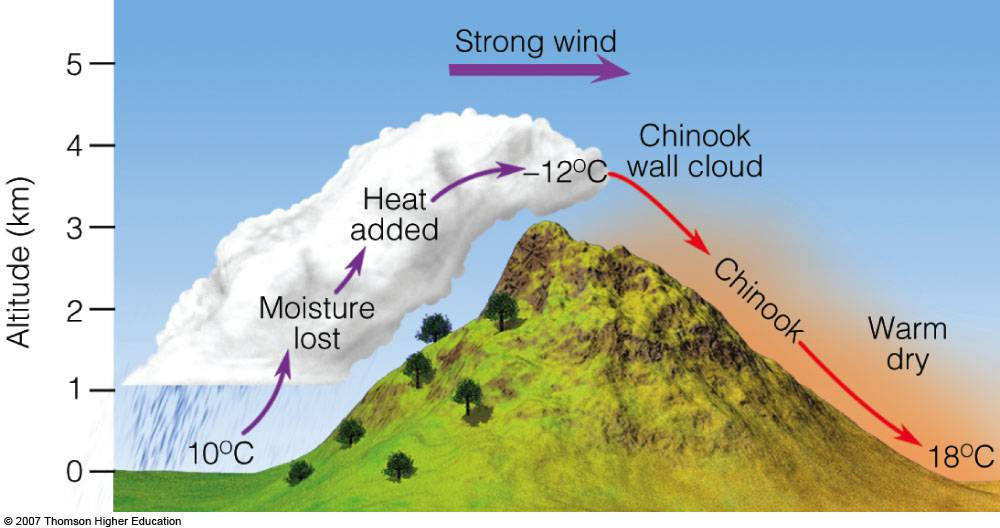Chinook- a Fun Word to Say, but Do You Know What It Is?
by David Moran, on Dec 20, 2018 2:00:00 PM
Terrain can play an essential role in various weather conditions. Winds that blow down the leeward side of a mountain can affect temperature and snow cover, as well as health in some people.
Chinook winds occur on the leeward side of a mountain when the prevailing winds are oriented west to east. As these winds descend, the air warms due to increasing pressure (called compressional warming) and also dries out.

Schematic of a Chinook
Chinooks can cause rapid warm-ups on the leeward side of a mountain, allowing snow and ice to melt quickly leading them to be called "snow eaters"; in fact, snow can melt at rates on the order of one inch per hour! The most significant temperature change due to a chinook occurred in January 1972 in Loma, Montana when the temperature went from -54°F to 49°F in 24 hours (that's a 103°F temperature change!). The fastest temperature change also occurred in January 1943 in the Black Hills of South Dakota; temperatures rose from -4°F to 45°F in two minutes. Once the wind dissipated, the temperature fell back to -4°F within half an hour.
As a chinook approaches, a stratus cloud formation known as a chinook arch is sometimes produced. However, these clouds do not usually produce precipitation.
The Sky in Calgary Alberta during a Chinook wind.
— Hazel (@Happychildhood) November 29, 2018
Creating a cloud band called a Chinook Arch also known as Snow Eater. pic.twitter.com/lvOyfHWHVz
Chinooks are known by different names in various regions. For example, in the Alps of Europe, they're called a foehn. In Argentina, it's known as a zonda. Whatever the name, they can have a wide range of effects from weather, affecting anything from aviation to agriculture.







